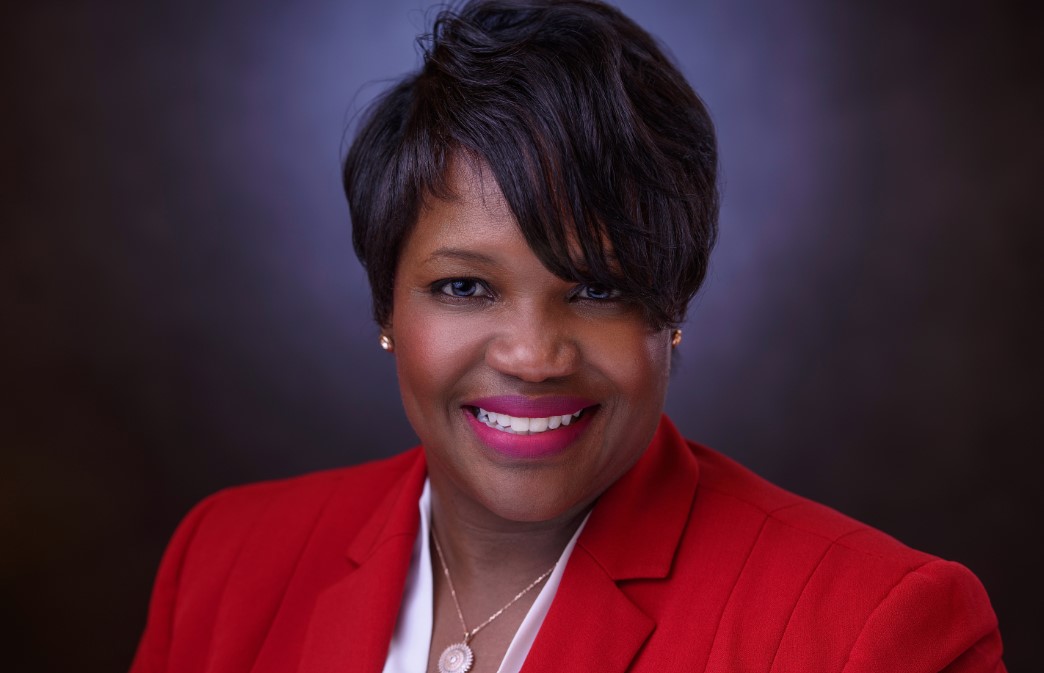Racism in Technology Leadership: A Black Woman’s Experience
Finding a path to greater diversity and understanding

Like many Black educators, Dr. Tracy Daniel-Hardy has experienced both sexism and racism in her professional life. Hardy is the director of technology at Gulfport School District in Mississippi. She began her career as a high school business and technology teacher before transitioning to a guidance role. From there, she was recruited as an instructional technology specialist and trainer in 2006, and then assumed the technology director’s role in 2010.
With more men than women in technology leadership in schools, women often confront sexism. “Then, because I’m an African-American woman, sometimes the racism creeps in,” says Hardy. “When it happens, it’s a harsh reminder that I have to be poised and ready to respond and speak up for myself, speak up for the children, and often, be an advocate for the teachers and librarians.” Hardy says that often she would be the only one speaking up, and if it conflicted with the leadership’s agenda, she would get pushback and vindictiveness that has become a constant in her career.
Hardy noticed the same pattern with how other Black women were treated—and who were even pushed out of the district. She frequently became the target of attacks that were racist in nature and had nothing to do with whether or not she was doing her job effectively. One white woman, in particular, was constantly aggressive.
“Technology purchases must be approved by board policy, by me, and the technology department to ensure they are compatible with our network, align with our strategic goals, and fit into the curriculum,” says Hardy. “Even if I had valid reasons for saying no to her requests, this woman would complain to leadership, and I would be confronted about it to explain my response or to make concessions, and this became a regular pattern.” And it was not just happening to her. “There are others who look like me that have this experience as well,” she says.
Hardy’s story of a particular incident was included in Shut'em Down: Black Women, Racism and Corporate America, published in October 2020 by Dr. Carey Yazeed, an award-winning author.
I was confused and flabbergasted by his response to everything I had said as I tried to explain the problem with her plan...He seemed to be hell-bent on proving a point to her by belittling me in front of the entire team…I don't remember all that he said, but I remember the burn of his accusations. I remember being dumbfounded because Mr. Dickens understood that I was not making the mandate but blamed me for Susan's frenzy. What he had said made very little sense, was very inaccurate, and was not technologically sound...He was protecting her from the now, outspoken Black female who obviously did not listen to the cautionary tales about treading lightly with Susan.
Dr. Tracy Daniel-Hardy, "Shut 'em Down"
After the book was published, Hardy was contacted by several retired educators, current educators, and educators who had left the district [who had experienced similar instances of racism]. “One sat in meetings and heard someone say, ‘I don’t know why these Blacks are coming here with this stuff.’ How do you respond to such a blatant racist statement?” Hardy says.
How Districts Can Lead Racial Change
At this time of public reckoning with our cultural racism, Hardy says it is important to focus on positive actions that district leaders can take to improve the climate for all educators:
Tools and ideas to transform education. Sign up below.
- District leaders are responsible for setting the tone of equality and equity. Diversity and hiring practices need to be intentional.
- This time of social unrest is the perfect time to look at your leadership to make sure that district leadership is as diverse as the children who are taught there.
- Black and brown students do not see themselves reflected by teachers or administrators. It’s difficult for children to imagine possibilities for themselves they cannot see. “We’re asking these children to be academically excellent, so we need to hire people who can be good role models for them,” Hardy says.
- Be intentional about listening to others; find out what other districts do for diversity.
- Technology leaders should be at the table with the rest of district leadership because it cannot operate in isolation anymore. The conversation is bigger than it used to be.
The coronavirus has accelerated change in Hardy’s district. The need to remotely connect students to schools has validated Hardy’s past recommendations as districts learn how other districts are handling the crisis. Her superintendent is now on a statewide committee and has demonstrated his appreciation of her planning and counsel. Hardy’s district was ready to make the transition to virtual learning because of her past recommendations, technology preparation, and implementation of best practices.
“People grow when they learn and hopefully they do better,” says Hardy. “All people have bias, not just white people. Sometimes we have to call it out before we are able to recognize it and make a change.”
Annie Galvin Teich has more than 25 years' experience in education writing and publishing. She is an edtech industry expert in content marketing and copywriting. As a regular contributor to Tech & Learning she focuses on the information needs of district decision makers.
